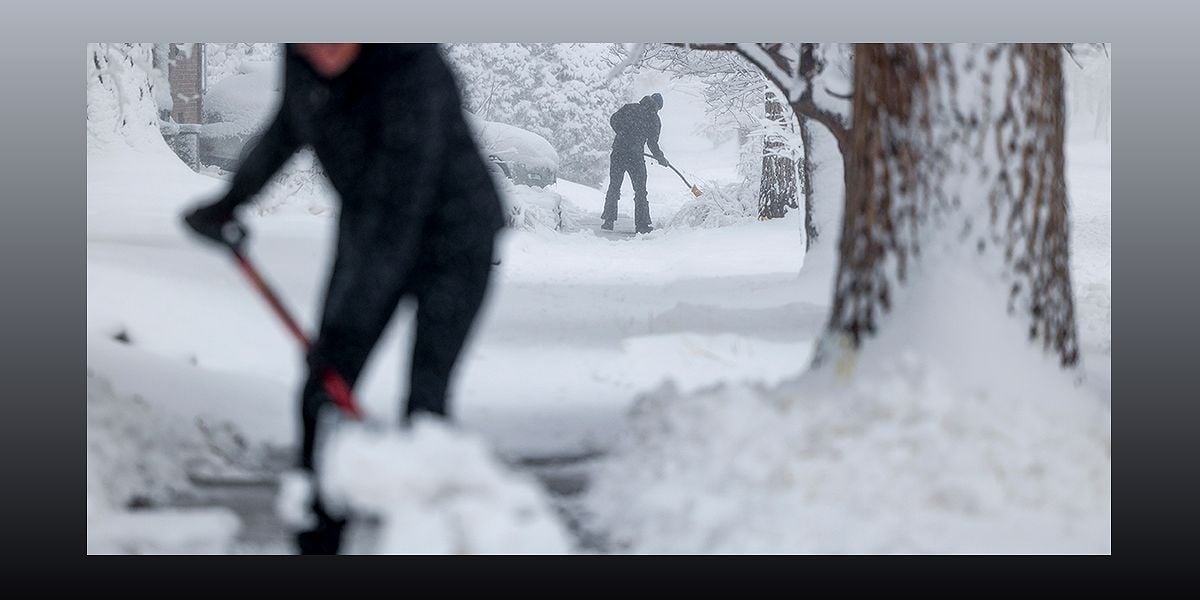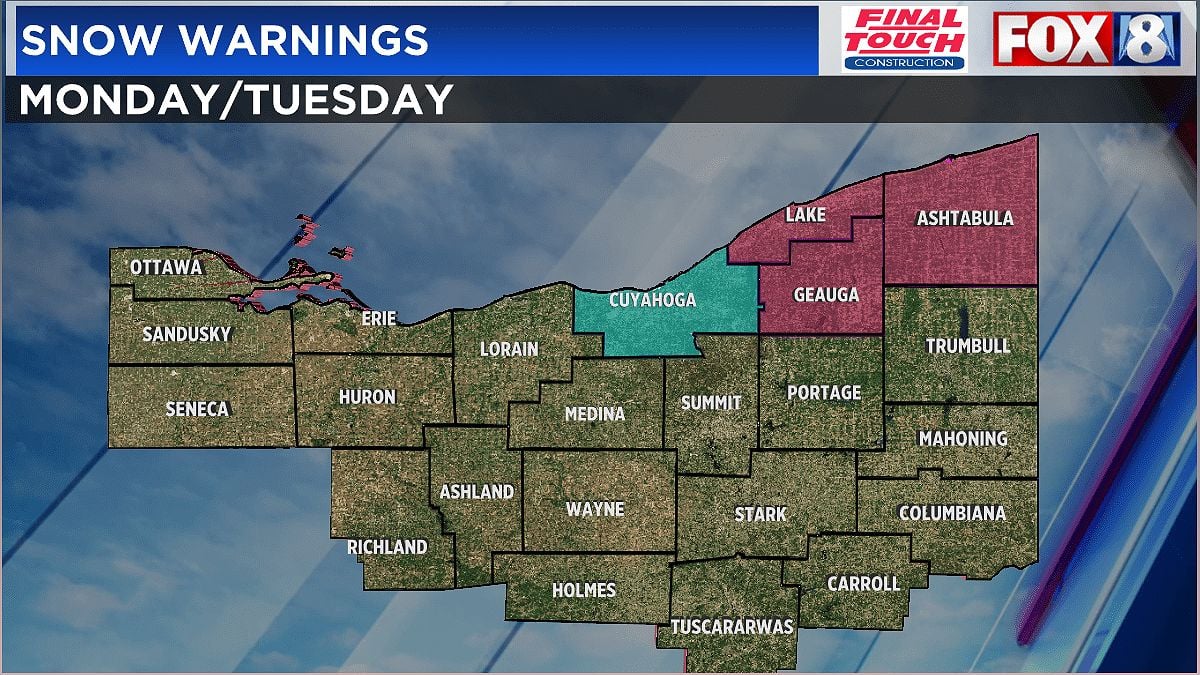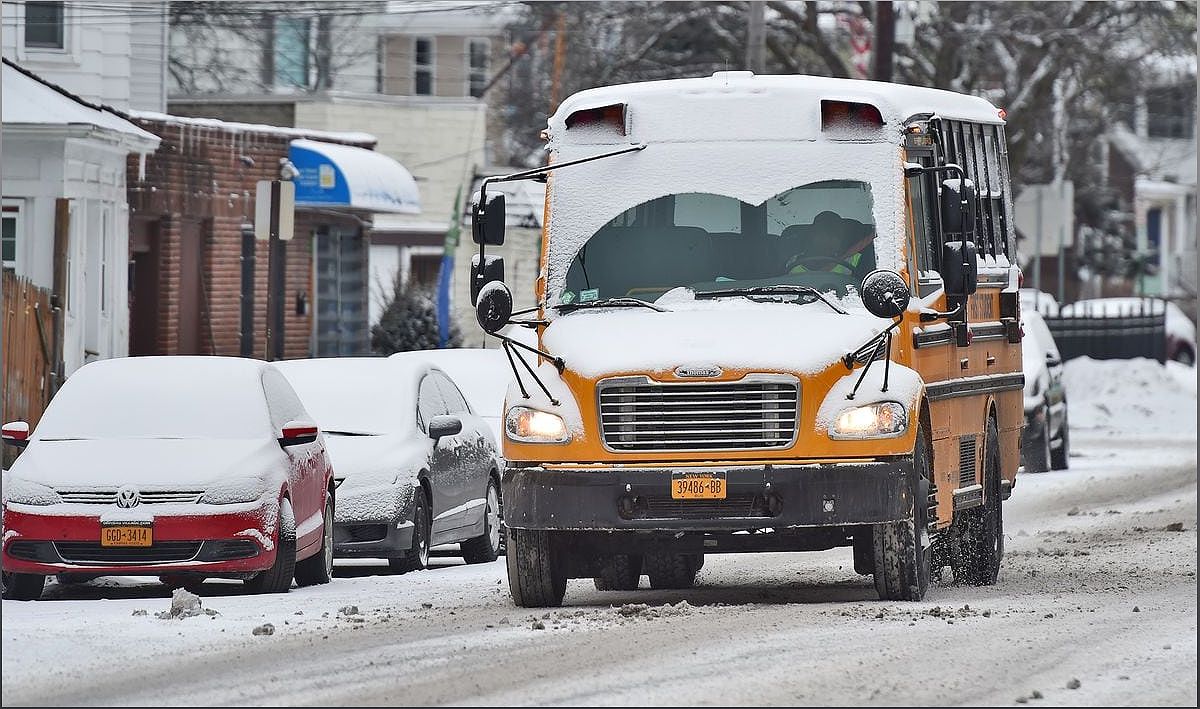Get ready for a significant multiday lake-effect snowstorm in western New York. Lake-Effect Snow Warnings have been issued as the region braces for heavy snowfall. With the potential for over a foot of snow in some areas, it's crucial to be prepared for challenging travel conditions. Find out more about this winter weather event and how to stay safe.
Lake-Effect Snow: What You Need to Know
Understand the basics of lake-effect snow and its impact on western New York.
Lake-effect snow occurs when cold air passes over the relatively warm waters of the Great Lakes, causing intense snowfall in localized areas. In western New York, this weather phenomenon can bring significant snow accumulation and challenging travel conditions.

When the right conditions align, heavy snow bands form and can dump over a foot of snow in a short period. The areas most at risk for heavy snowfall are along the eastern shores of lakes Erie and Ontario.
Stay tuned to local weather updates and heed the Lake-Effect Snow Warnings in effect. Prepare for potential disruptions and make necessary arrangements to ensure your safety during this winter storm.
Travel Preparations: Tips for Winter Weather
Learn how to prepare for winter travel and ensure your safety on the road.
Traveling during a winter snowstorm requires extra caution and preparation. Here are some essential tips to keep in mind:

Gather Winter Supplies
Stock your vehicle with emergency supplies such as blankets, a flashlight, extra batteries, a first aid kit, and non-perishable food items. It's also a good idea to have a shovel and ice scraper on hand.
Check Road Conditions
Before heading out, check the latest road conditions and weather forecasts. Adjust your travel plans if necessary to avoid hazardous routes.
Drive Slowly and Maintain Distance
Reduce your speed and increase your following distance to allow for safe braking on slippery roads. Avoid sudden maneuvers and use caution when approaching intersections.
Stay Informed
Keep up-to-date with weather alerts and listen to local authorities for any travel advisories or road closures. Stay connected with reliable sources of information.
By following these tips, you can better prepare yourself for winter travel and minimize the risks associated with snowy conditions.
Snowfall Expectations: Areas at Risk
Discover the regions in western New York that are likely to experience heavy snowfall.
The heaviest snowfall from this lake-effect snowstorm is expected to stay south of Buffalo and Watertown. However, other areas in western New York should still be prepared for significant snow accumulation.

Locations from Erie to Ellicottville have the highest likelihood of seeing 12-18 inches of snow, depending on where the heaviest snow bands set up. Central New York, particularly near Richland, could see snow totals of up to 2 feet.
It's important to note that lake-effect snow is highly localized, and snowfall amounts can vary greatly within short distances. Stay updated with local forecasts to understand the snowfall expectations for your specific area.
Safety Measures: Navigating Challenging Conditions
Learn how to stay safe and navigate through the challenging winter conditions.
When dealing with heavy snowfall and challenging travel conditions, it's crucial to prioritize safety. Here are some safety measures to consider:
Stay Indoors if Possible
If travel is not essential, it's best to stay indoors until the storm passes and road conditions improve. This reduces the risk of accidents and allows snow removal crews to work more efficiently.
Use Caution on the Roads
If you must venture out, drive slowly and cautiously. Keep a safe distance from other vehicles and be prepared for reduced visibility. Avoid unnecessary trips and only travel if absolutely necessary.
Dress Appropriately
Wear warm, layered clothing and ensure you have proper winter gear such as hats, gloves, and boots. Dressing appropriately will help prevent frostbite and hypothermia in cold temperatures.
Communicate and Share Itinerary
Inform someone about your travel plans, including your destination and estimated arrival time. This way, someone will be aware of your whereabouts in case of any emergencies.
By following these safety measures, you can navigate through the challenging winter conditions with caution and minimize potential risks.